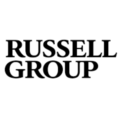There are dozens of metrics available in the marketplace to help measure your corporate real estate portfolio. Whether it’s cost per square foot, cost per employee, NOI or IRR it can seem a bit overwhelming to decide which to use. When you take a step back and look at all of the metrics to choose from, you will likely be left asking yourself which metric is the MOST important for your organization. In general and based on our research, our answer regarding the best metric to use: how many people per square foot. Read on as we provide a detailed explanation of this metric and why we believe it is the most important for you.
Crowded vs Spacious: How Many People Per Square Foot Works for You

Figuring out how many people per square foot is not cut and dry, because there are a variety of factors that you need to look at before settling on an answer.
First and foremost, the obvious question you need to ask yourself is, how crowded do you want your space to be? As the calendar turns from 2021 to 2022 and employees are returning to in-person work in a post-pandemic environment, answering this question will be one of the top priorities for both employees and employers because health and safety is now top of mind. The ability for social distancing is key, as is adjusting to the new reality of different ways of working. After COVID-19 forced many employees into full-time remote work for over a year, maintaining a sense of flexibility in scheduling is the overwhelming preference for workers. With that said, when determining how to measure people per square foot, you will need to factor in whether all employees will be returning to working from the office full-time or whether a hybrid work style is going to be your path moving forward.
Thomas Matheny, Senior Associate at Aquila, a commercial real estate firm based in Texas, authored a helpful post entitled, “How Much Office Space Do I Need?” In this post, Matheny breaks down office space needs into 3 categories that we are sharing below:
- High Density (80 – 150 square feet per employee): Majority open seating with rows of small desks. May have a few private offices. Often seen in companies that house many different teams within the same space, as well as for sales, technology, coworking or customer support offices.
- Average Density (150 – 250 square feet per employee): Mix of open cube or desk space and private offices. Traditional office layout.
- Spacious (250 – 500 square feet per employee): Majority of the space consisting of large private offices. Historically seen in law firms.
Building off of the points raised by Matheny, Austin Tenant Advisors, a commercial real estate company, writes about the average number of employees per square foot. A recent post on the Austin Tenant Advisors’ website reads in part, “Currently many North American offices average 150 to 175 square feet per person. That number is down from previous years when businesses average 225 sf per person. If going by the rule of thumb for open office space designs that most tech companies use you will average 125 to 175 sf per person. So for 40 people you will need 5,000 to 7,000 sf of office space for rent.”
COVID Changes: Employees per Square Foot
A team from CoreNet Global, a non-profit corporate real estate association recently authored a paper with information on the changes when it comes to the employees per square foot metric.
A recent “Hackathon” presentation from a group at CoreNet Global includes, in part, “Pre-COVID-19, our industry was seeing a decline in the average square feet per employee (average range in 2019 was 175 RSF per person…), which was seen as a real estate strategy to increase efficiency and reduce direct costs. At the same time, executives were finding low utilization rates of their square footage. Our team contends that the space-centric measurement of square feet per person is not necessarily an indication of how space is being utilized post COVID. That said, the demand on the total occupant load within a space will decrease as Work From Home (WFH), centers of excellence, and other strategies become more prevalent post COVID19. Additionally, new distancing requirements, increased circulation, and hoteling/drop-in locations will drive up per-person ft2.”
According to the team from CoreNetGlobal, “Thus, while at a national/regional scale the total footprint of the corporate office will contract, at the per-office scale ft2 -per-person will expand. Taking these trends together translates to an increase in ft2 -per-person by an estimated range of 10-20%, dependent upon the classification of office use.”
Average Sizes of Office Space

The Mehigan Company, a corporate real estate advisory firm, put out the following list of typical square footage based on different sized workspaces:
- Large Office – 200 to 400 sq. ft.
- Medium Office – 150 to 250 sq. ft.
- Small Office – 90 to 150 sq. ft.
- Open Space Workstations – 60 to 110 sq. ft. per person
- Work Group Areas – 80 to 100 sq. ft. per person
- Reception Area – 100 to 200 sq. ft. + 10 sq. ft. per person waiting
- Conference Room – 50 sq. ft + 25 sq. ft. per person seated
- Mail Room – 125 sq. ft.
- File Room – 200 sq. ft.
- Lunch/Break Room – 75 sq. ft. + 25 sq. ft. per person seated
- Work Room – 125 to 200 sq. ft.
- Halls/Corridors within the space – 20% to 30% of the total usable area
Tenants Rule of Thumb by Use
OfficeFinder, web-based office space referral and information network, explains the “tenants rule of thumb” in the following way:
“The general rule of thumb is to allow anywhere between 125 and 225 usable square feet of office space per person. This of course, depends upon the type and style of the business and the workspace layout. These figures can vary based upon special needs such as extra-large conference rooms or storage requirements, but will include normal amenities within a general use office.”
Costs of corporate real estate of course varies tremendously depending on your location.
In that spirit, Office News, an outlet that provides information on corporate real estate, provides a helpful breakdown of corporate real estate costs in the U.S.
A recent article from Office News reads in part, “The United States is home to one of the world’s largest commercial real estate markets, with an estimated worth of approximately $950bn. In terms of size, industrial space is the largest sub-market with 21bn square feet, followed by retail with 13bn, and offices, which account for 11bn.”
When it comes to corporate real estate costs in major cities across America, Office News shares the following statistics:
- New York: Average gross rates for metro New York offices are $81 / sq ft / year. Industrial space averages $19 / sq ft / year.
- Los Angeles: $44 / sq ft / year for offices in the metropolitan area and $11 / sq ft / year for industrial premises.
- Miami: In the same range as Los Angeles for CBD offices and slightly lower for industrial space ($8 / sq ft / year).
- Boston: $39/ sq ft / year for metro offices, rising to $80 in Cambridge. Industrial properties average $10 / sq ft / year.
- Philadelphia: $36 / sq ft / year for city center offices, $27 for suburban space, and $6 / sq ft / year for industrial properties.
- Atlanta: Slightly under $30 / sq ft / year for offices with a rate of $35 in Downtown Atlanta. Industrial space is charged at an average of $5 / sq ft / year.
- Chicago: Approximately $33 / sq ft / year for office space, rising to averages above $40 in The Loop. Industrial premises average $6 / sq ft / year.
- Dallas and other urban centers in Texas: between $25 and $30 / sq ft / year, whereas industrial rates are below $5.
HubStar, is a space utilization software that helps to optimize and creative adaptive workplaces. Our technology works to enable data-driven real estate decisions providing you with proactive insights that can save you money on unnecessary leases and improve employee experiences.






















